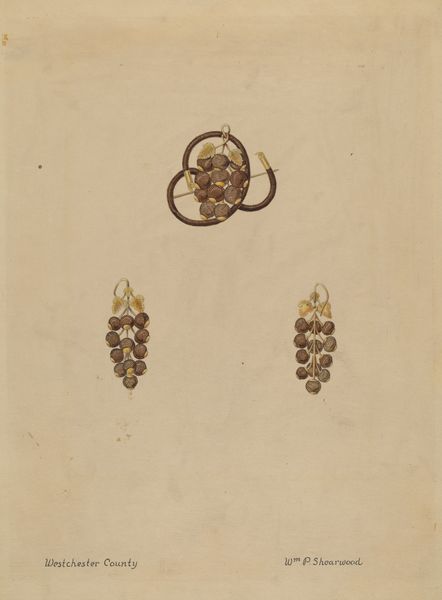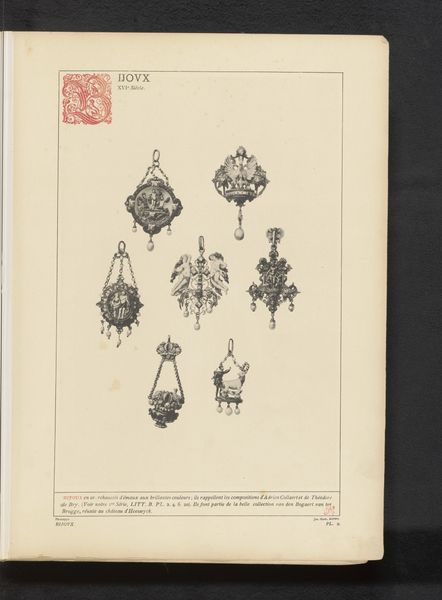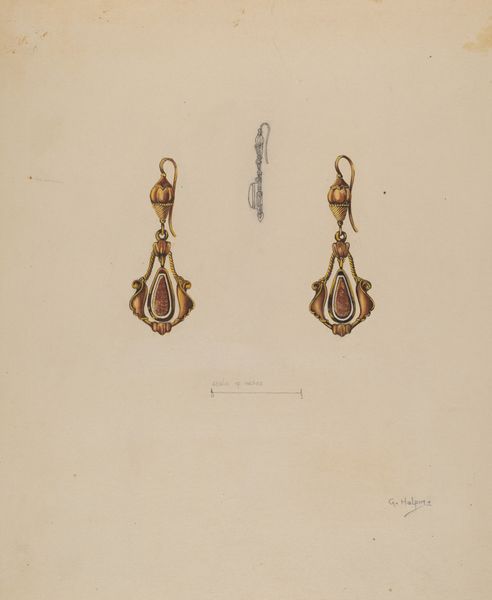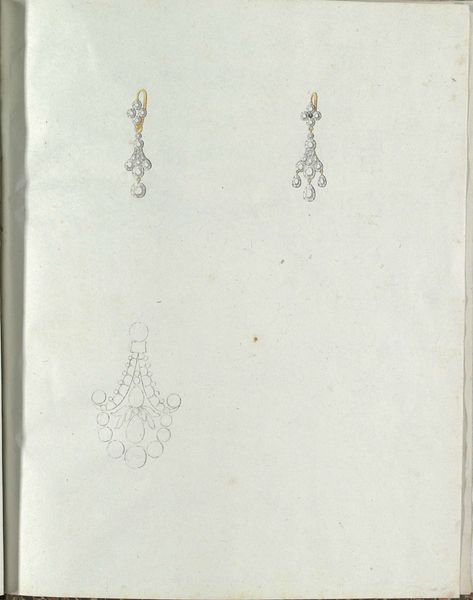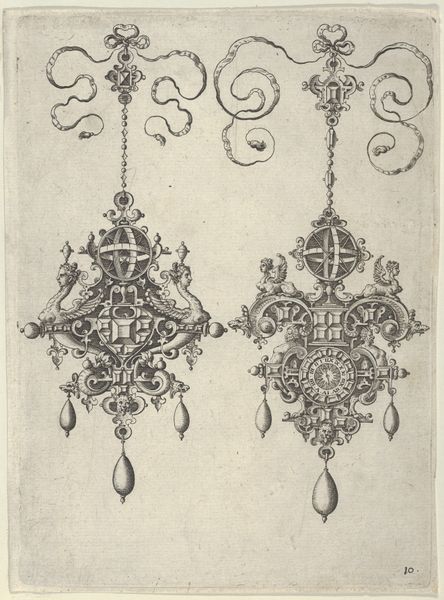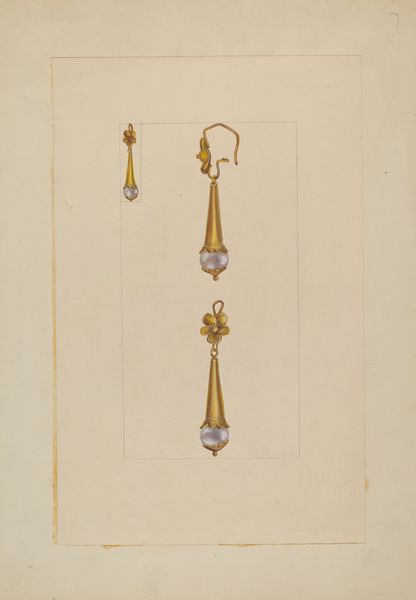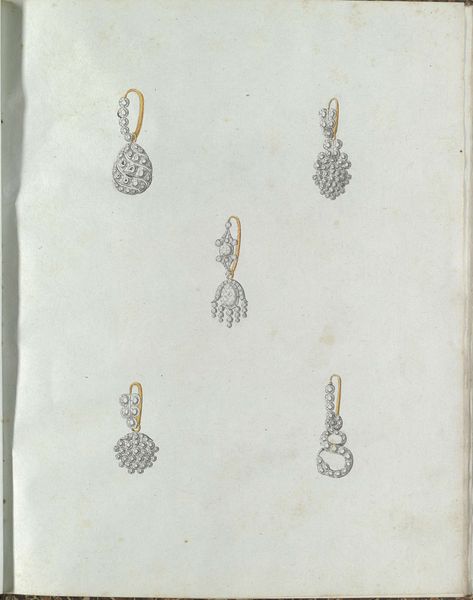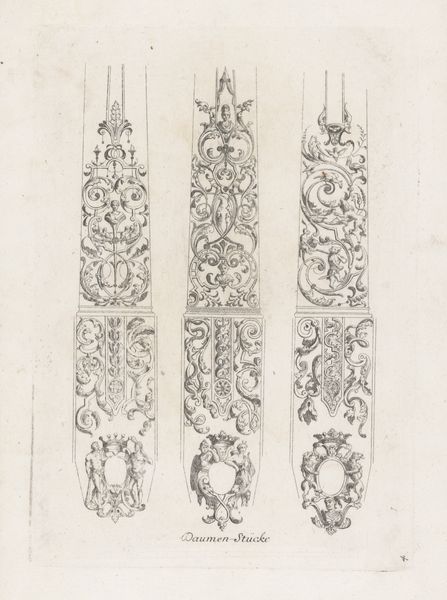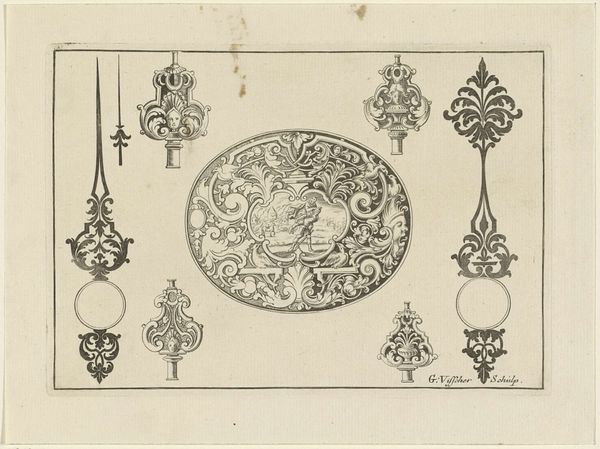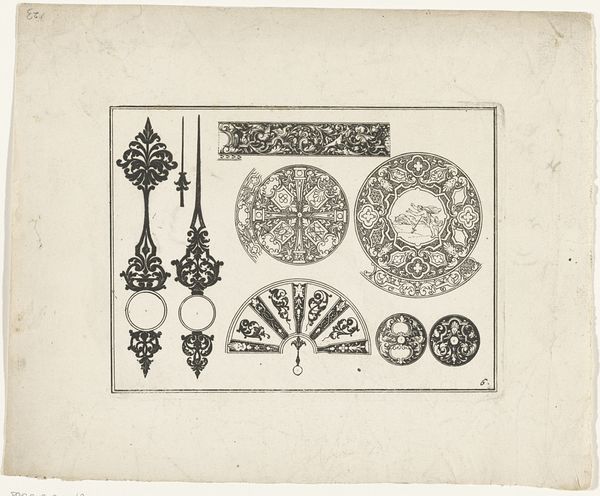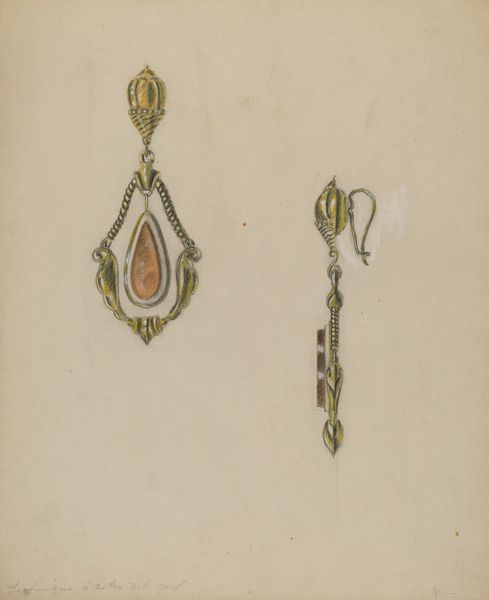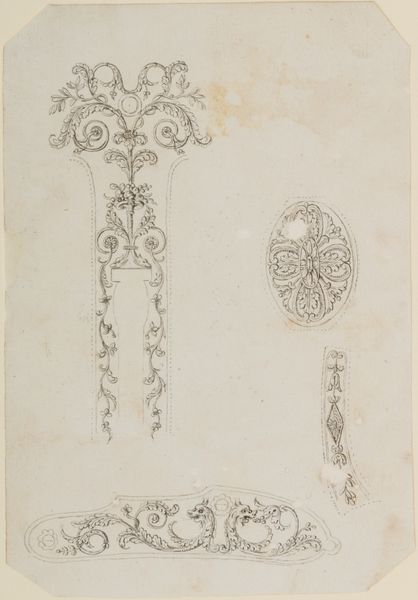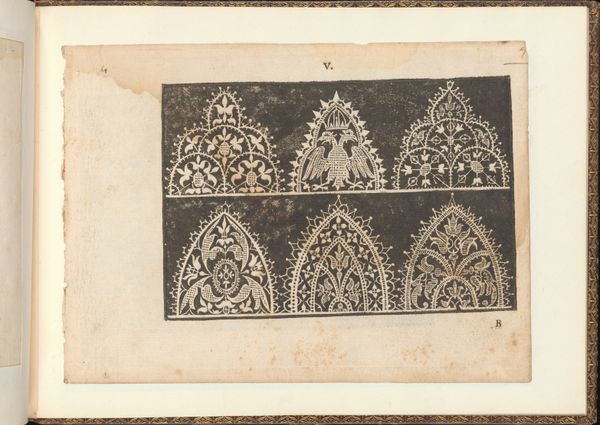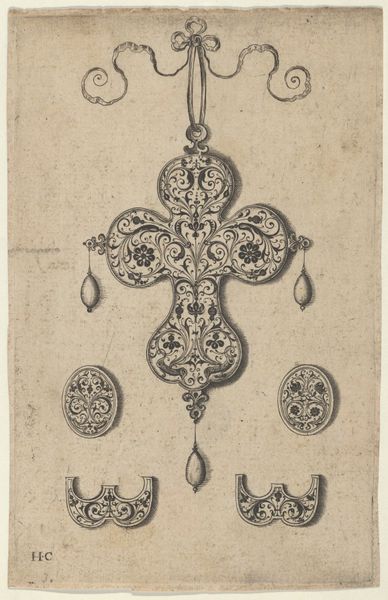
drawing, print, ink, engraving
#
drawing
#
ink paper printed
# print
#
11_renaissance
#
ink
#
geometric
#
engraving
Dimensions: Sheet (Trimmed): 11 5/8 × 7 3/16 in. (29.5 × 18.3 cm) Plate: 6 15/16 × 5 11/16 in. (17.7 × 14.5 cm)
Copyright: Public Domain
Bernhard Zan created this ornamental design with grotesques in 1581, using etching. Zan was a short-lived yet prolific designer and printmaker in late 16th-century Germany. This print, now in the collection of the Metropolitan Museum of Art, demonstrates how artists disseminated design ideas during this period. The etching presents six variations of ornamental pendants, filled with grotesque figures and arabesque patterns. The grotesque style, revived during the Renaissance, blended human, animal, and plant forms in fanciful ways. These designs catered to the demand for fashionable jewelry among the elite. Printmakers like Zan played a crucial role in shaping tastes and styles across Europe, as their works were easily portable and reproducible. This was a period where sumptuary laws sought to regulate displays of wealth, so such designs also negotiated the tensions between aristocratic display and civic virtue. Historians of design turn to prints like these, along with inventories and costume books, to reconstruct the material culture of the past. The study of such historical objects allows us to understand the ways in which social status was communicated through visual symbols.
Comments
No comments
Be the first to comment and join the conversation on the ultimate creative platform.
